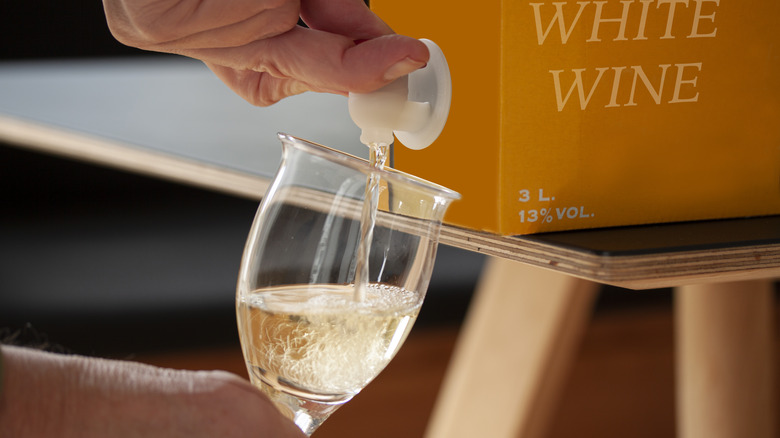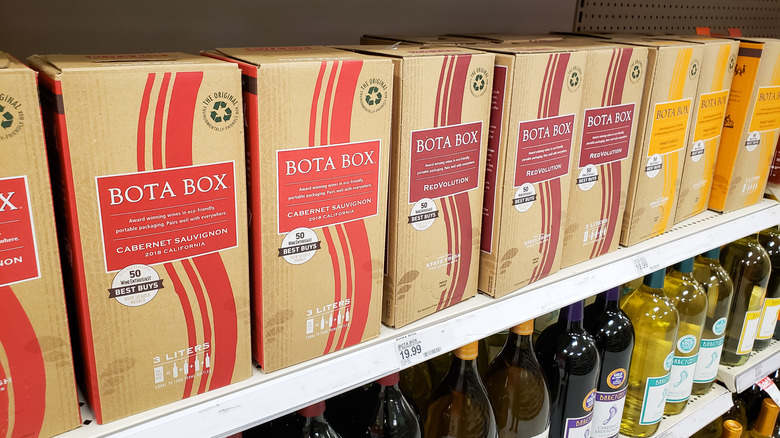Your Boxed Wine Needs To Be Stored Upside Down. Here's Why
Traditionally, wine enthusiasts have stereotyped boxed wine as inferior to their favorite bottled varietals. First invented in 1964 by an Australian winemaker named Thomas Angove, the original packaging relied on a setup originally intended for storing battery acid. What's commonly known as boxed wine is technically bagged wine, as the wine is stored in a plastic bladder with a valve. This bladder sits inside a corrugated cardboard box, giving it the name "boxed wine."
For those new to boxed wine, here's a pro tip: Store the box upside down, with the tap facing upward, to prevent unsightly dripping on your fridge shelf. If the box is stored upright, small droplets of wine can remain inside the tap and drip down slowly, even when the bladder is sealed well after each pour. Leaning the box on its back (when not in use) easily solves this issue, and it keeps your fridge clean in between wine nights.
Still, you should keep in mind that unopened boxed wine can't be aged (at least, not once packaged) like bottled wine, and it generally should be consumed within one year of purchase. However, once a box of wine has been opened, it can last up to six weeks in the fridge — much longer than its bottled counterpart. An extended shelf life makes boxed wine ideal for people who want to enjoy just a glass or two at a time.
More benefits of boxed wine
Even though boxed wine tends to be a budget-friendly option for the burgeoning sommelier, it isn't because it's inferior to bottled brands. (There are cheap, poor quality wines sold in both boxes and bottles.) Not only is the plastic and cardboard packaging cheaper to produce than glass bottles, but the larger size essentially allows consumers to buy their wine in bulk. The standard, 3-liter size is roughly equivalent to four bottles of wine, or 20 glasses.
Boxed wine also boasts a lower carbon footprint than bottled wine. The carbon-intensive glass manufacturing process has actually led to other eco-friendly innovations, such as aluminum wine bottles. Similarly, boxed wine's plastic-and-cardboard packaging makes these wines an alternative, sustainable option for the future. The cardboard containers are also easier to store for both producer and consumer, as they take up less space and don't require extra padding to prevent breakage during shipping or traveling.
Despite all of these benefits, the discerning wine enthusiast may still opt for bottled varietals, simply due to the relatively limited boxed wine options. Traditional glass bottles also allow their contents to age like a fine wine (literally), and bottled wine sets — usually offered in groups of six or 12 bottles — allow for sampling a wider variety of wines at a cheaper price point than buying individual bottles.


